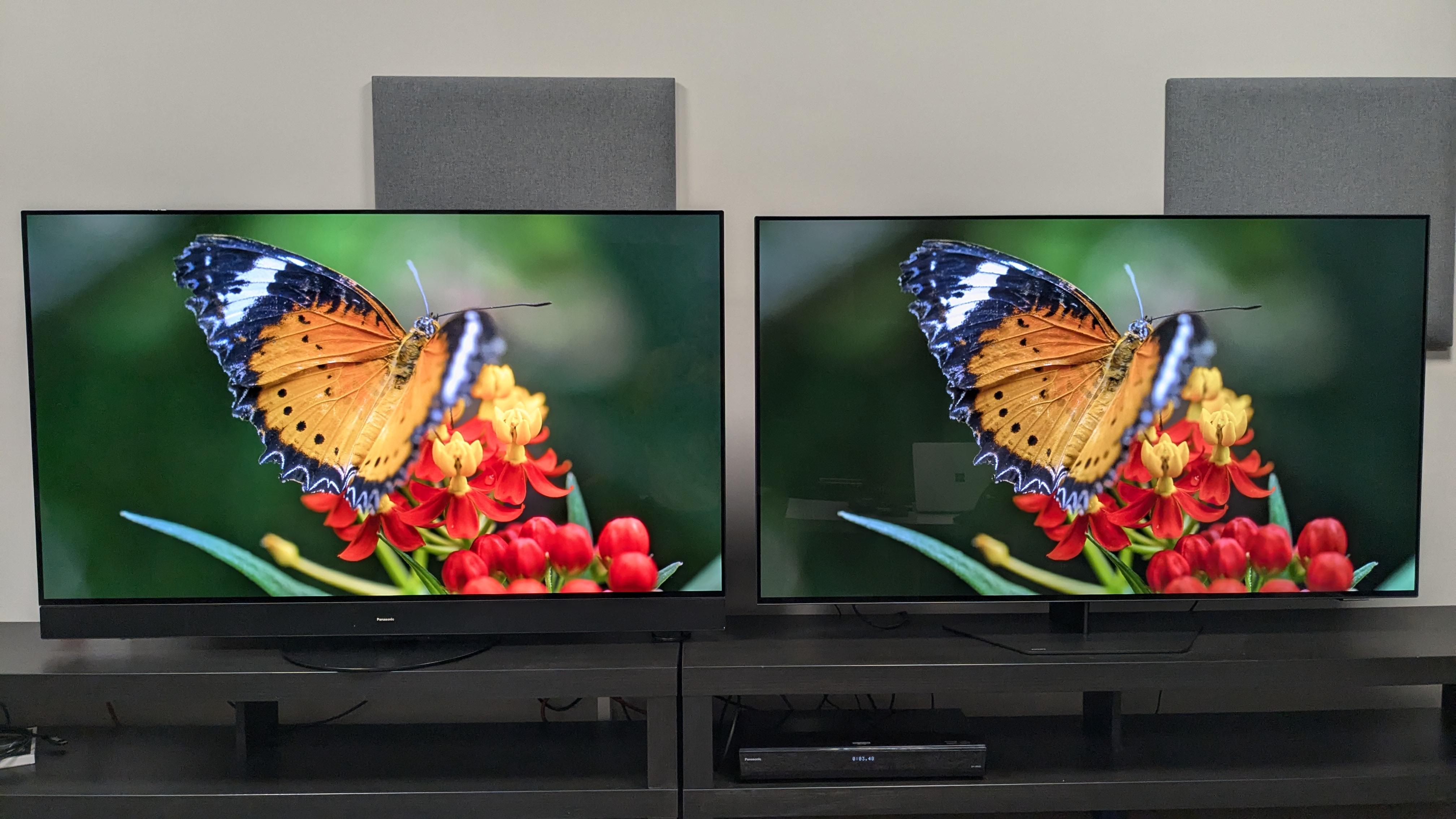
OLED TVs are among the most popular available thanks to the realistic contrast levels created by their self-dimming pixels, which give images a lifelike appearance. For many years, OLED has been at the premium end of the market, unattainable for many people, but over time more affordable (by OLED standards) mid-range models have become available.
Philips makes some of the best TVs, including high-quality mid-range TVs. The company’s sets also include Ambilight tech, which uses coloured lights projected on the wall behind the screen to add an immersive element. I enjoyed Ambilight so much when I tested the Philips OLED808, that it made me feel like a kid at Christmas.
I have recently been testing the OLED808’s successor, the Philips OLED809. So far, it has impressed me in equal measure to the 808, but this time I was able to compare it with a competitor – the Panasonic MZ1500. Panasonic is known for making some of the best OLED TVs around, and both the MZ1500 and the superb MZ2000 from 2023 were widely lauded, though held back by a sub-par smart TV platform.
It’s fair to say that, based on my previous experience with both brands, I went into this comparison with preconceived expectations of picture and sound quality. Happily, I was proven wrong.
Captivating pictures
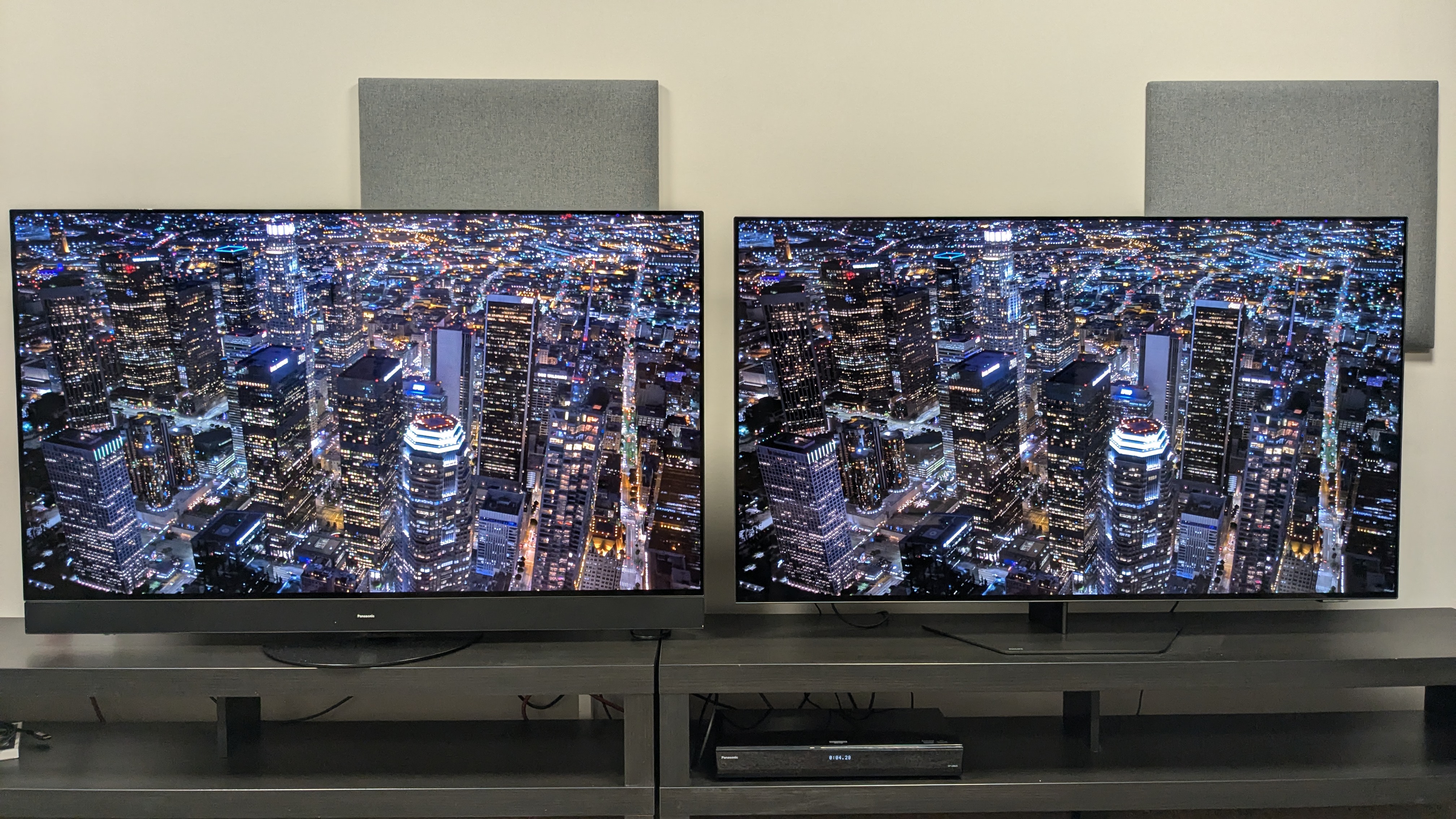
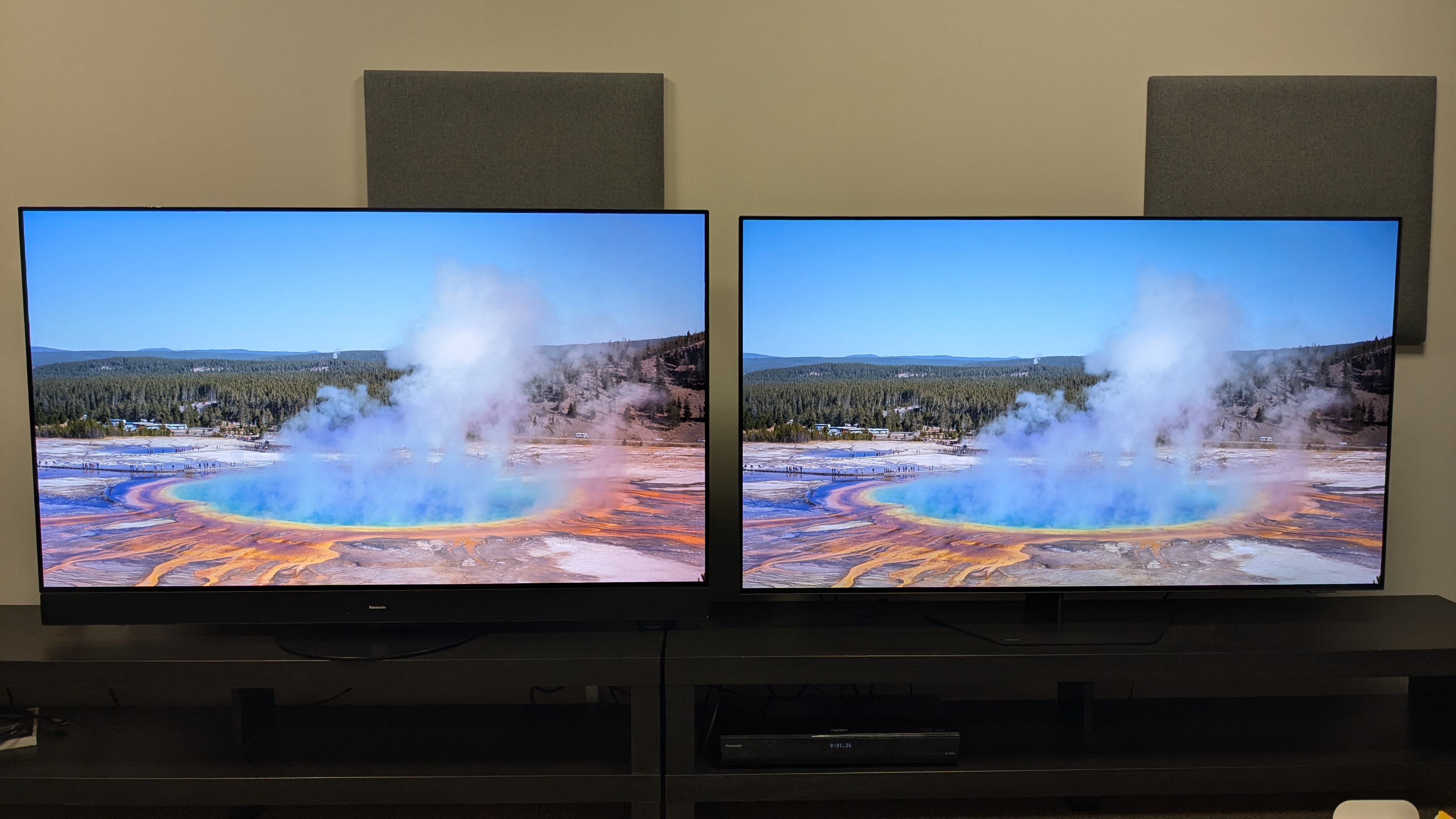
It’s rare to find a bad OLED TV – only varying degrees of good to incredible. Regardless of whether you pay the full premium for a model like the Samsung S95D or something more entry-level such as the LG B3, you’ll still get a very good picture. Panasonic’s sets lean towards the more premium end (even the mid-range MZ1500 used here) so I expected the MZ1500 to have a stronger picture than the OLED809, but it ended up much closer than anticipated.
Both the 55-inch models used for this comparison were set to Filmmaker Mode, which is generally the most accurate preset picture mode on a TV.
First things first: Textures and details were impeccable on both sets. Watching the Spears & Munsil UHD Benchmark Blu-ray’s demo footage, rocky landscapes, oceans and even a deer's fur and lizard's scales had a crisp and refined look.
On both sets, the patchy stubble and facial marks in close-up shots of Batman’s face in The Batman came across with great detail, and the same held for the plating in Batman’s armour and the material of police officer’s uniforms.
The Batman is a dark movie and an excellent source to test black levels and shadow detail. Watching it, I discovered that the Panasonic was, to my surprise, brighter than the Philips. The OLED809 displayed bold colours during solo testing (and was brighter than I remember the MZ1500 being), but in this case, it was clear the MZ1500 was the brighter TV and had slightly stronger contrast, creating a fantastic balance between brighter and darker tones. The OLED809 was by no means a slouch. It also displayed excellent contrast, but the MZ1500 just seemed to draw the eye in more.
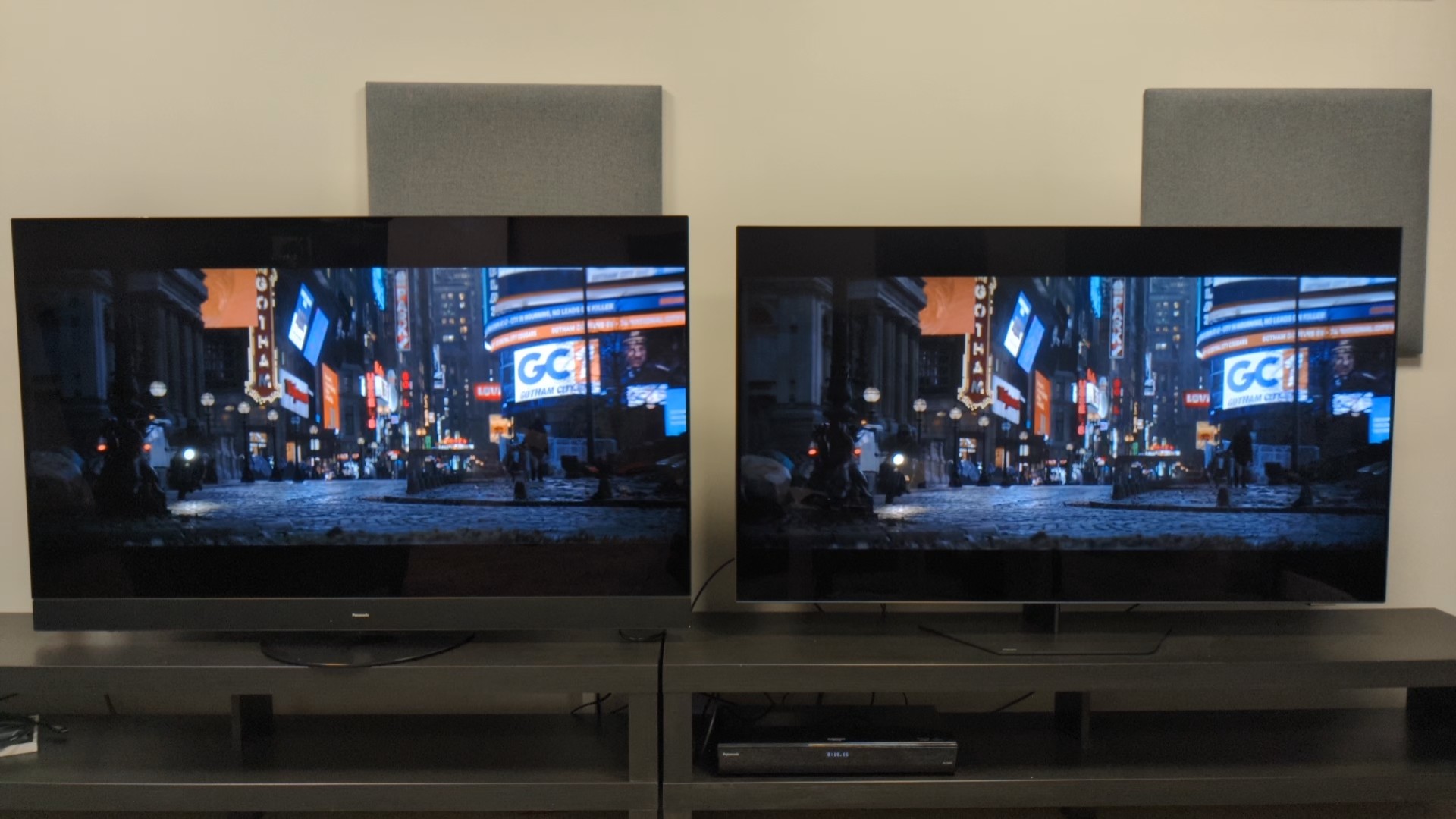
Both TVs displayed vivid and dynamic colours that were also accurate, though I was surprised to find that the OLED809’s looked more natural (Panasonic TVs are generally considered to have a more ‘natural’ look).
In La La Land, Mia’s yellow dress popped more on the MZ1500 but it seemed a little bit more accurate on the OLED809. During the ‘A Lovely Night’ number, the blues, pinks and purples of the LA sky were again brighter and punchier on the MZ1500, but more defined on the OLED809. Again turning to Spears & Munsil, butterflies and flowers with bright orange tones seemed deeper on the OLED809, but more vivid on the MZ1500. Either way, both displayed spectacular colours.
For one final test, I switched both sets to their respective ‘Standard’ modes – Standard on the MZ1500 and Personal on the OLED809. (Crystal clear mode on the OLED809 could also be used, but it edged towards ‘Vivid’ mode, which we typically avoid.) I did this because Standard modes tend to look brighter and punchier, though at the sacrifice of accuracy. But for Ready Player One’s OASIS CGI game sequences, it suited. And once again I was surprised to find the MZ1500 had a bit brighter colour, emphasizing the green and blue fireworks before the opening race and the blue tones on Parzival and the hub world within the OASIS.
Unexpected sound
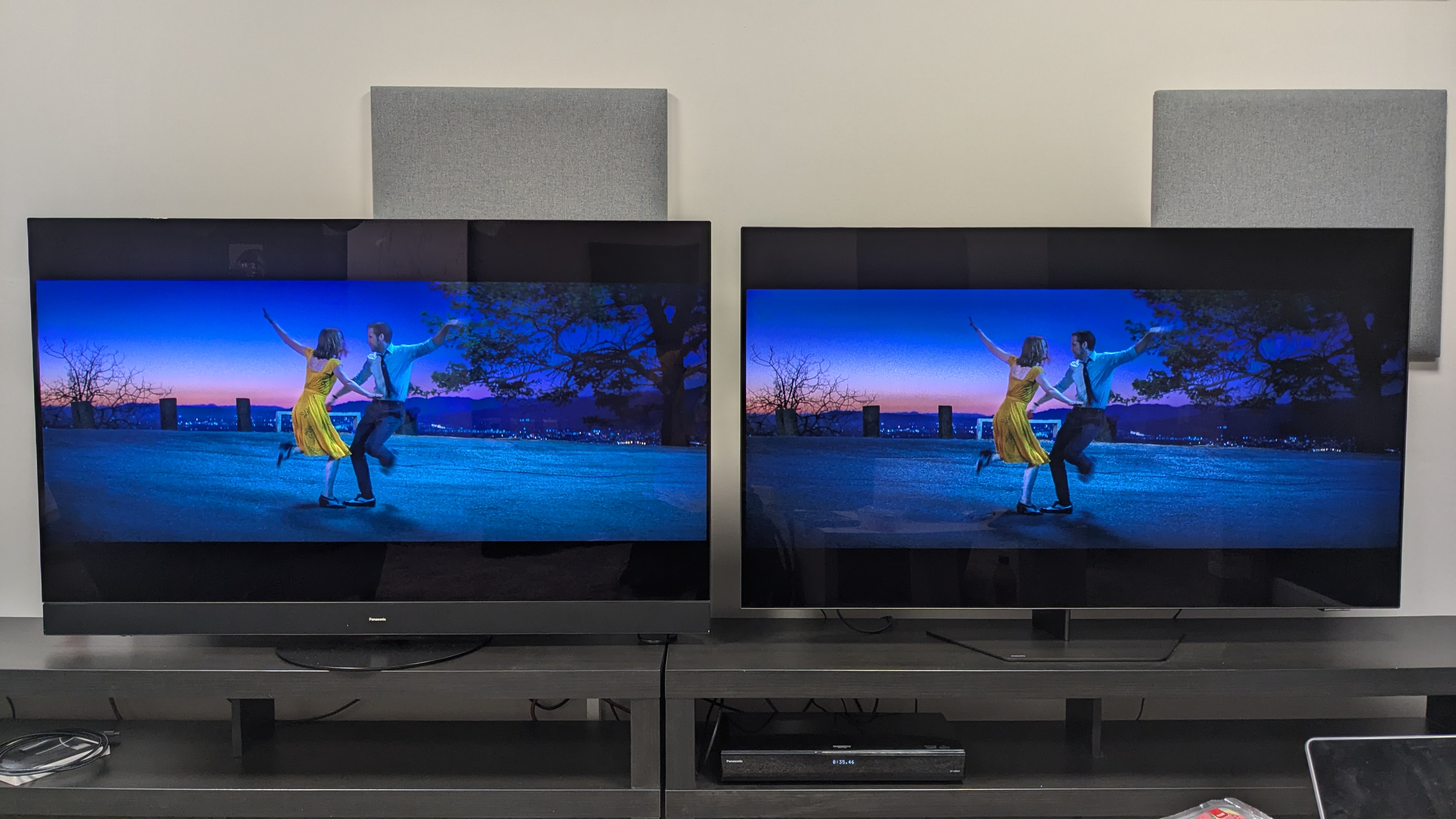
With an external speaker at the bottom of the screen serving as a pseudo ‘soundbar’, the MZ1500 has a sound quality advantage over the OLED809. Or so I thought.
In my comparison, the MZ1500 did have a punchier, bassier sound. In The Batman’s Batmobile chase scene, for instance, the rumble of the engine boomed through the speaker with crunching metal, screeching tyres and explosions all sounding suitably cinematic. But, when switching to the OLED809, I was surprised by just how meaty its sound was, with the swerving cars as Batman and The Penguin weave through traffic accurately placed throughout. That's not to say the MZ1500 sounded bad, it’s just that the OLED809’s sound grabbed my attention more.
Going back to La La Land, both sets handled the horn-heavy jazz score well. The soundtrack’s trumpets could easily overwhelm less capable TV speakers, but neither TV faced this issue. Once again, though, I found myself drawn to the OLED809, as the dynamic score seemed better spread around the Philips TV's screen. I also found that woodwind, bass and brass instruments had better clarity on the OLED809 than on the MZ1500.
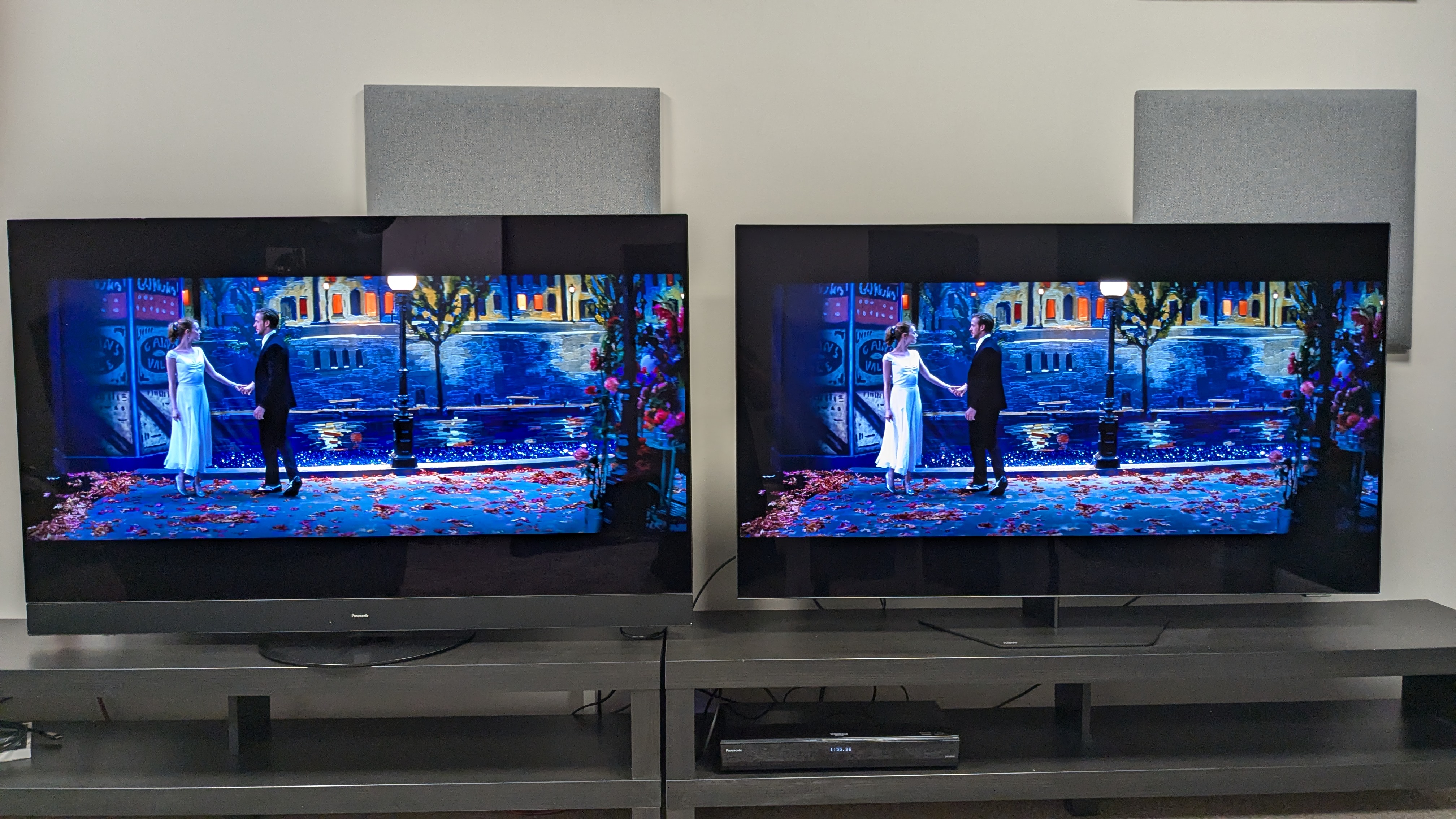
The Dolby Atmos presentation on both TVs was generally solid and accurate (for built-in TV speakers, anyway), but once again the Philips, despite having what felt like a more ‘contained’ soundstage, seemed to present smaller details such as scraping shoes or soaring strings in the extravagant observatory scene better than the MZ1500. Don’t get me wrong, neither TV will beat one of the best soundbars, but they’re both pretty good.
One thing I noted is that the OLED809 did not like having its volume levels pushed, losing the clarity it displayed at middling and lower volumes. In comparison, the MZ1500 did a better job with high volume levels.
It's worth noting that both TVs were set to their ‘Movie’ sound mode equivalent – Entertainment on the OLED809, and Stadium (with Theater Pro sound creation) on the MZ1500. And it's also worth mentioning that the Panasonic has more sound modes and settings to experiment with than the Philips.
Final thoughts
Ultimately, these are both excellent TVs. My time with the Philips OLED809 (review coming soon) has been brilliant, and I always enjoy going back to the Panasonic MZ1500. But, it was nice to be surprised – by the MZ1500 for its brighter and arguably bolder picture, and by the OLED809 for its better-placed and distributed sound.





!["[T]he First and Fifth Amendments Require ICE to Provide Information About the Whereabouts of a Detained Person"](https://images.inkl.com/s3/publisher/cover/212/reason-cover.png?w=600)

